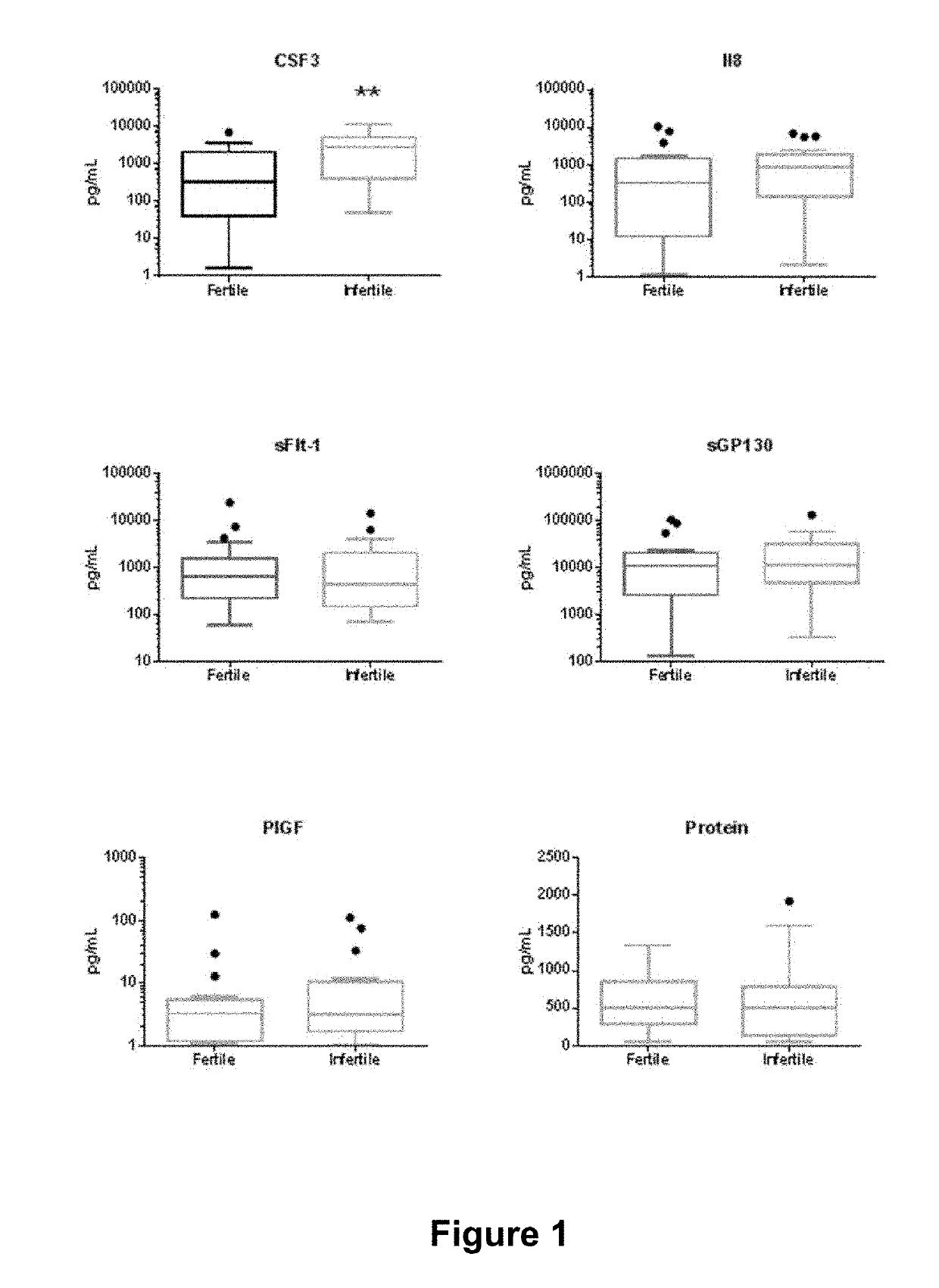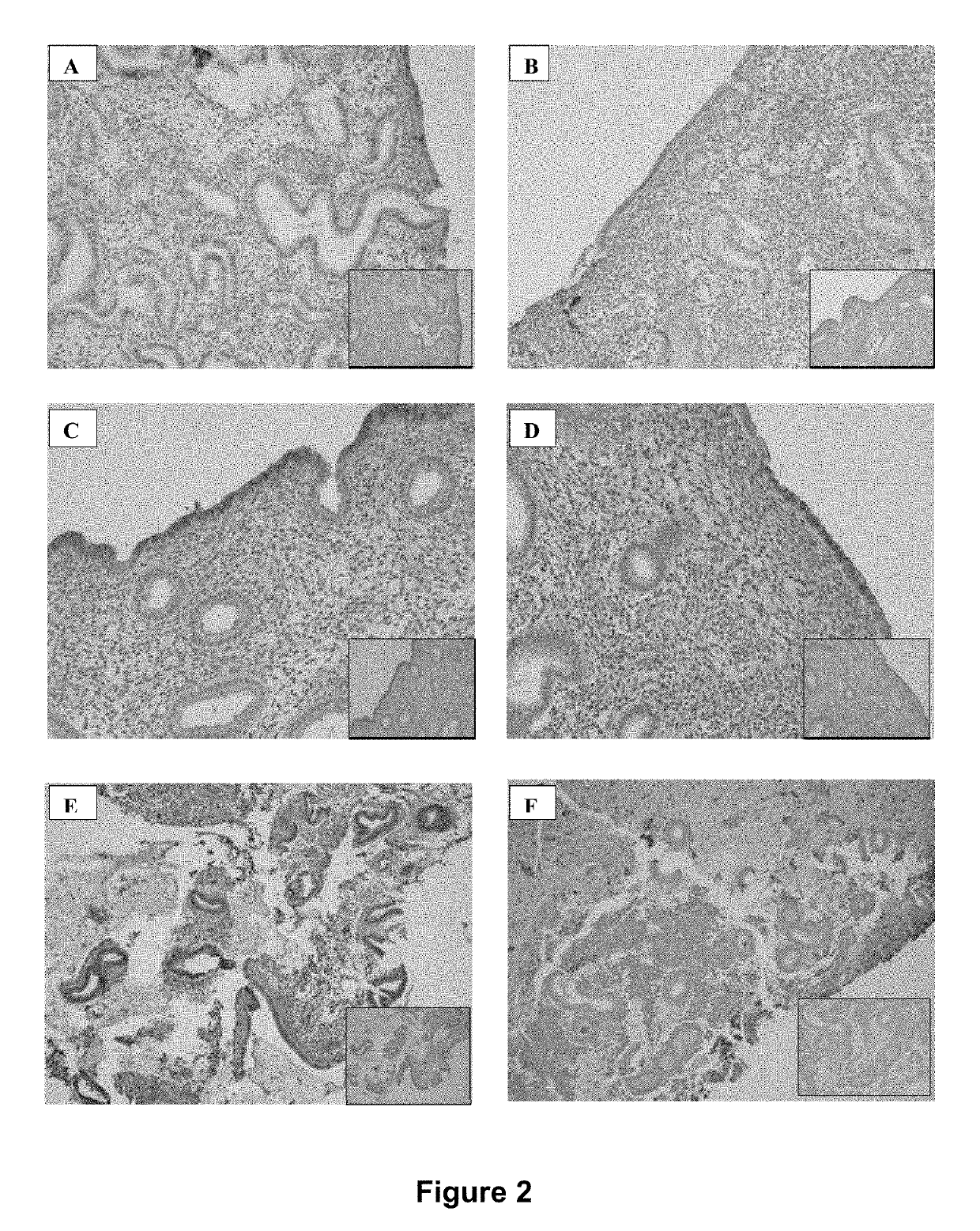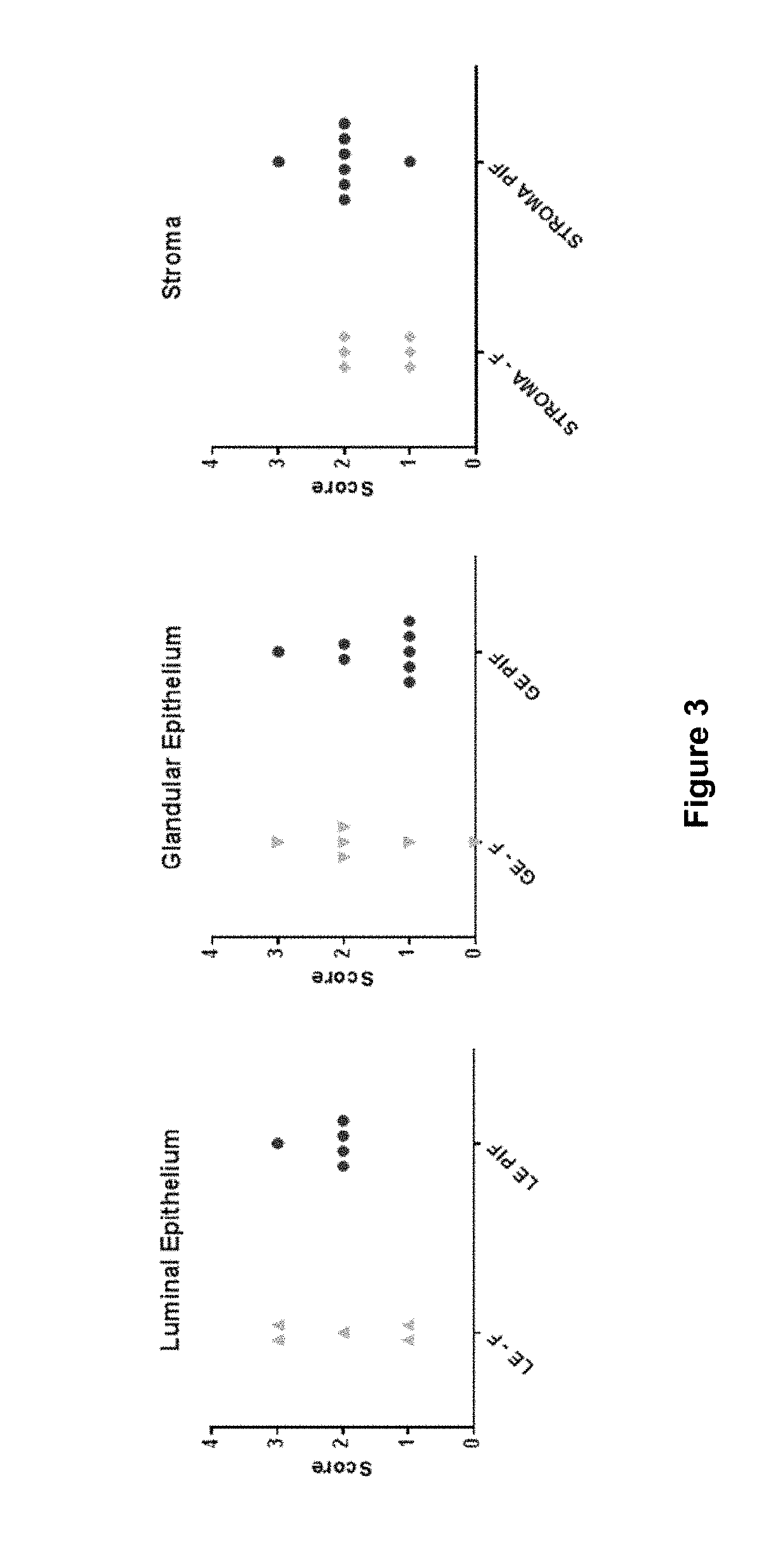Method of treatment and prognosis
a treatment and prognosis technology, applied in the field of assays, can solve the problems of misguided and contraindicated use of csf3 as an adjuvant to improve the implantation rate, affecting affecting the success rate of the pregnancy, so as to improve the likelihood of a successful pregnancy, enhance pregnancy success, and reduce the effect of csf3 activity
- Summary
- Abstract
- Description
- Claims
- Application Information
AI Technical Summary
Benefits of technology
Problems solved by technology
Method used
Image
Examples
example 1
Natural Cycling Cohort
[0139]Uterine lavage and endometrial biopsy from 19 fertile and 18 primary idiopathic infertile women were staged as early secretory. There was no significant difference in age between the fertile (36.7±4.0 years) and infertile (35.2±5.3 years) groups. Detailed medical histories and pathology reports revealed a mixture of uterine pathologies and bleeding abnormalities among the patient cohort (Table 2). Levels of biomarkers in uterine lavage are shown in FIG. 1.
[0140]Analysis by Mann-Whitney test and ROC compared individual analyte concentrations in uterine lavage from fertile and infertile women during the early secretory phase of the cycle (Table 3). Among early secretory samples only CSF3 showed significant discrimination of fertile (mean=1300+ / −435.8 pg / mL) and infertile (mean=3309+ / −705.4 pg / mL) women, by Mann-Whitney (p=0.006). No other markers showed significant discrimination between fertile and infertile women in the early secretory phase.
[0141]Spearma...
example 2
Analysis of Lavage from Women Undergoing ART
[0143]Concentrations of CSF3 in uterine lavage from women at hCG+2 in stimulated cycles were compared. Patients were divided into three groups according to cycle outcome: pregnancy, no pregnancy, and pre-clinical pregnancy, with a fourth group comprising fertile women undergoing IVF stimulation as egg donors. Concentrations of CSF3 differed significantly (Kruskal-Wallis p=0.0002) between groups being elevated in women who did not become pregnant (mean±SEM, 3447±89) compared to those who did achieve pregnancy (mean±SEM, 1245±269), preclinical pregnancy (mean±SEM, 1992±40) and the fertile stimulated egg donors (mean±SEM, 719±274) [FIG. 3]. Analysis of individual pairings (Dunn's test) showed significant differences between ‘no pregnancy’ and both ‘pregnancy’ (p=0.041) and ‘donor’ (p=0.025) groups.
example 3
Detection of CSF3 and its Receptor in Uterine Tissue
[0144]Immunohistochemistry of CSF3 within early secretory phase tissues showed a general pattern of expression in luminal and glandular epithelium, and to some extent stromal expression, similar to that previously reported for mid-secretory tissue. There was, however, no clear difference in staining pattern of CSF3 between fertile and infertile women. Results are shown in FIG. 2.
[0145]The CSF3 receptor revealed substantial staining in both luminal and glandular epithelium of fertile women during the early secretory phase of the cycle, while stromal staining was weak in comparison. However, among idiopathic infertile women, the epithelial expression of CSF3R was much reduced or even absent, while stromal staining was more intense.
[0146]Among the small IVF cohort of tissues sampled at hCG+2 there was a similar pattern of intense glandular epithelial staining in tissue from fertile egg donors undergoing IVF stimulation procedures and ...
PUM
| Property | Measurement | Unit |
|---|---|---|
| time period | aaaaa | aaaaa |
| time period | aaaaa | aaaaa |
| time | aaaaa | aaaaa |
Abstract
Description
Claims
Application Information
 Login to View More
Login to View More - R&D
- Intellectual Property
- Life Sciences
- Materials
- Tech Scout
- Unparalleled Data Quality
- Higher Quality Content
- 60% Fewer Hallucinations
Browse by: Latest US Patents, China's latest patents, Technical Efficacy Thesaurus, Application Domain, Technology Topic, Popular Technical Reports.
© 2025 PatSnap. All rights reserved.Legal|Privacy policy|Modern Slavery Act Transparency Statement|Sitemap|About US| Contact US: help@patsnap.com



